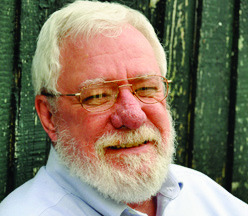Bradshaw
Firefighters didn’t like steam-powered fire engines when they were first introduced into south Louisiana. They admitted that the engines worked just fine once they got going, but fires could burn out of control before they could build up enough steam to get to the fire and pump water onto it.
The volunteers argued that a hand pump pulled by a team of horses could get to the blaze faster, and that a crew that knew its business could use it to spray a steady stream of water just as big and just as far as the steam engines could.
Those hand pumps were a far cry better than the bucket brigades they replaced, but their problem was that they needed to be worked hard and fast to maintain a good stream, and the pumpers tired out quickly. Nonetheless, the volunteers’ argument was supported in Abbeville in September 1900 when a fire spread through almost an entire block of the business district before the steamer could do any good.
The fire was noticed about 9:30 that night, when “the firing of pistols followed by the ringing of the fire bell and that of the Catholic church” called volunteers to the Greene & Lacour store on the north side of Port Street, according to an Abbeville Meridional report.

Bradshaw
The old frame building “was soon wrapped in flames,” and, the newspaper said, “again it was the old, old story of the steam fire engine” which took half an hour to raise steam enough to throw water on the flames.
Abbeville had seen the same scenario just months before, in January 1900, when the town became “Food for the Flames,” according to the newspaper headline. The newspaper reported then that “a few buckets of water at the start would [have] ... put the fire out,” but by the time the steamer started pumping, Dr. Mark Theriot’s office at the corner of State and Peace Streets was “a seething mass of flames.”
Nearly all of the businesses on State Street were destroyed by that blaze, including Dozier’s candy store, the old Red Store, and the Leon Feray store, and N. C. Young’s “big drug store.” Dr. Robert Young’s “handsome” office at the rear of the drug store was saved by the work of volunteers who used “a small hand pump” to spray the building for more than four hours.
The Meridional noted that “the ladies turned out in large numbers” to help with the pump, and that they “worked with a will in saving the stock of goods in the stores, and in caring for the goods on the ground until they were safely housed.”
“When the steamer finally got to work, she did excellent service and soon had the fire under control,” the newspaper said. But a lot of damage had been done before the engine got going.
The steam engines finally began to gain acceptance in the early 1900s, after engineers figured out how to get them steamed up in just a minute or so, but that wasn’t in time to save Abbeville from its most disastrous fire ever.
That one, on February 19, 1903, raged for more than two hours and destroyed 14 buildings. It had “gained considerable headway” before it was discovered, so the steam engines couldn’t be given the full blame. Most of the old frame buildings were dry as tinder and “burned like a sheet of paper,” the newspaper said.
It also appears that there weren’t as many willing hands to work the pumps this time. According to the Meridional, “Hundreds of people witnessed the disastrous conflagration, many of them working like heroes to save property threatened with destruction, while many seemed perfectly contented to merely look on and make comments to those standing near.”
You can contact Jim Bradshaw at [email protected] or P.O. Box 1121, Washington LA 70589.

